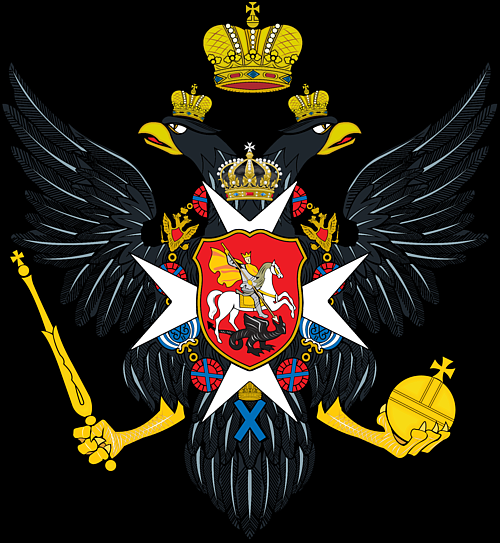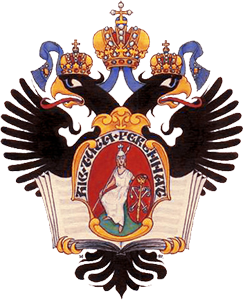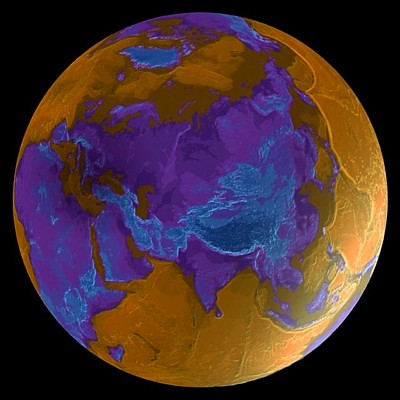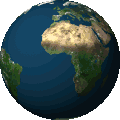|
Asia
RUSSIA Россия 
Russia or the Russian Federation, is a European country located in Eastern
Europe with a vast expanse of territory that stretches across Northern Asia. 
It is, by a considerable margin, the largest country in the world by area, covering more than one-eighth of the Earth's inhabited land area, spanning eleven time zones, and bordering 16 sovereign nations. 
ST PETERSBURG Санкт-Петербург


Saint Petersburg (Russian: Санкт-Петербург) is the second largest city in Russia, politically incorporated as a federal subject (a federal city), located on the Neva River at the head of the Gulf of Finland on the Baltic Sea. 
In 1914 the name of the city was changed from Saint Petersburg to Petrograd (Russian: Петроград), in 1924 to Leningrad (Russian: Ленинград), and in 1991, back to Saint Petersburg. 
In Russian literature, informal documents, and discourse, the word "Saint" is usually omitted, leaving "Petersburg" . 
Saint Petersburg was founded by Tsar Peter the Great on May 27, 1703. 
Between 1713 - 1728 and 1732 - 1918, Saint Petersburg was the imperial capital of Russia. 
In 1918 the central government bodies moved from Saint Petersburg (then named Petrograd) to Moscow. 
Saint Petersburg is also home to The Hermitage, one of the largest art museums in the world. 
Saint Petersburg is a major European cultural center, and also an important Russian port on the Baltic Sea. 
Saint Petersburg is often described as the most Western city of Russia, as well as its cultural capital. 
It is Russia's 2nd largest city after Moscow with 5 million inhabitants (2012) and the fourth most populated federal subject. 
Saint Isaac's Cathedral or Isaakievskiy Sobor in Saint Petersburg. 
Saint Isaac's Cathedral or Isaakievskiy Sobor in Saint Petersburg. 
It is the largest Russian Orthodox cathedral (sobor) in the city. It is the largest orthodox basilica and the fourth largest cathedral in the world. 
It is dedicated to Saint Isaac of Dalmatia, a patron saint of Peter the Great, who had been born on the feast day of that saint. 
The church on St Isaac's Square was ordered by Tsar Alexander I, to replace an earlier Rinaldiesque structure. 
The cathedral took 40 years to construct, under Montferrand's direction, from 1818 to 1858. 
Under the Soviet government, the building was stripped of religious trappings. 
In 1931, it was turned into the Museum of the History of Religion and Atheism, the dove sculpture was removed, and replaced by a Foucault pendulum. 
Suspended underneath the peak of the dome is a sculpted dove representing the Holy Spirit. 
The cathedral's bronze doors are covered in reliefs, patterned after the celebrated doors of the Battistero di San Giovanni in Florence, designed by Lorenzo Ghiberti. 
Internal features such as columns, pilasters, floor, and statue of Montferrand are composed of multicolored granites and marbles gathered from all parts of Russia. 
The interior was originally decorated with scores of paintings by Karl Bryullov and other great Russian masters of the day. 
St. Petersburg, formerly known as Leningrad, Neva River june 2014. 
St. Petersburg, Neva River june 2014. 
Saints Peter and Paul Cathedral Neva River june 2014. 
Saints Peter and Paul Cathedral Neva River june 2014. 
St. Petersburg, Neva River june 2014. 
St. Petersburg, formerly known as Leningrad, Neva River, at the head of the Gulf of Finland on the Baltic Sea, june 2014. 
The Church of the Savior on Spilled Blood - Saints Peter and Paul Cathedral. 
The Church of the Savior on Spilled Blood, Saints Peter and Paul Cathedral, St. Petersburg. 
The Church of the Savior on Spilled Blood is one of the main sights of St. Petersburg. 
The Church of the Savior on Spilled Blood, june 2014. 
The Church is prominently situated along the Griboedov Canal; paved roads run along both sides of the canal. It is also variously called the Church on Spilt Blood and the Cathedral of the Resurrection of Christ. 
This Church was built on the site where Tsar Alexander II was assassinated and was dedicated in his memory. It should not to be confused with the Church on Blood in Honour of All Saints Resplendent in the Russian Land, located in the city of Yekaterinburg. 
Architecturally, the Cathedral differs from St. Petersburg's other structures. 
The city's architecture is predominantly Baroque and Neoclassical, but the Savior on Blood harks back to medieval Russian architecture in the spirit of romantic nationalism. 
The Church contains over 7500 square metres of mosaics—according to its restorers, more than any other church in the world. 
The Church of the Savior on Spilled Blood, St. Petersburg, june 2014. 
The Church of the Savior on Spilled Blood, St. Petersburg, june 2014. 
The Church of the Savior on Spilled Blood, St. Petersburg, june 2014. 
St. Petersburg, formerly known as Leningrad, Neva River june 2014. 
The area of St. Petersburg city proper is 605.8 km2 (233.9 square miles). The area of the federal subject is 1,439 km2 (556 sq mi), which contains Saint Petersburg proper (consisting of eighty-one municipal okrugs), nine municipal towns – (Kolpino, Krasnoye Selo, Kronstadt, Lomonosov, Pavlovsk, Petergof, Pushkin, Sestroretsk, Zelenogorsk) and twenty-one municipal settlements. 
Petersburg is on the middle taiga lowlands along the shores of the Neva Bay of the Gulf of Finland, and islands of the river delta. 
  |








